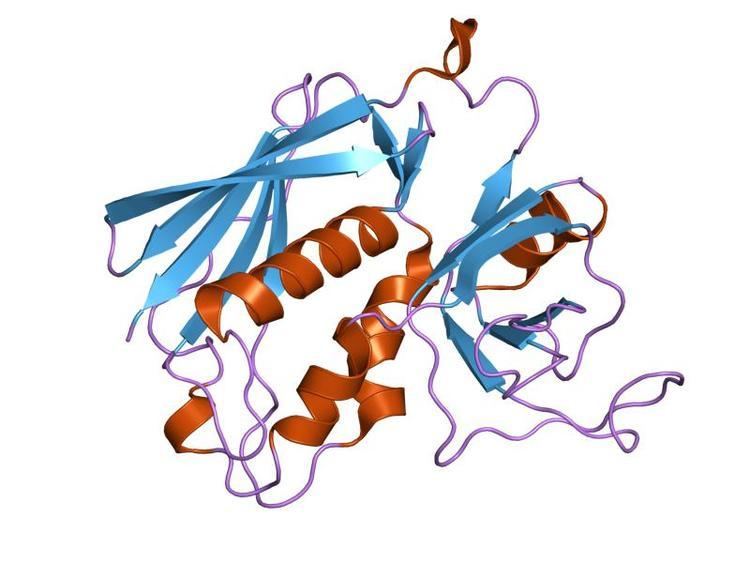Symbol Stap_Strp_tox_C Pfam clan CL0386 PROSITE PDOC00250 | Pfam PF02876 InterPro IPR006123 SCOP 1se3 | |
 | ||
An enterotoxin is a protein exotoxin released by a microorganism that targets the intestines.
Contents
Enterotoxins are chromosomally encoded or plasmid encoded exotoxins that are produced and secreted from several bacterial organisms. They are often heat-stable, and are of low molecular weight and water-soluble. Enterotoxins are frequently cytotoxic and kill cells by altering the apical membrane permeability of the mucosal (epithelial) cells of the intestinal wall. They are mostly pore-forming toxins (mostly chloride pores), secreted by bacteria, that assemble to form pores in cell membranes. This causes the cells to die.
Clinical significance
Enterotoxins have a particularly marked effect upon the gastrointestinal tract, causing vomiting, diarrhea, and abdominal pain. The action of enterotoxins leads to increased chloride ion permeability of the apical membrane of intestinal mucosal cells. These membrane pores are activated either by increased cAMP or by increased calcium ion concentration intracellularly. The pore formation has a direct effect on the osmolarity of the luminal contents of the intestines. Increased chloride permeability leads to leakage into the lumen followed by sodium and water movement. This leads to a secretory diarrhea within a few hours of ingesting enterotoxin. Several microbial organisms contain the necessary enterotoxin to create such an effect, such as Staphylococcus aureus and E. coli.
Bacterial
Staphylococcal enterotoxins and streptococcal pyrogenic exotoxins constitute a family of biologically and structurally related toxins produced by Staphylococcus aureus and Streptococcus pyogenes. These toxins share the ability to bind to the major histocompatibility complex proteins of their hosts. A more distant relative of the family is the S. aureus toxic shock syndrome toxin, which shares only a low level of sequence similarity with this group.
All of these toxins share a similar two-domain fold (N and C-terminal domains) with a long alpha-helix in the middle of the molecule, a characteristic beta-barrel known as the "oligosaccharide/oligonucleotide fold" at the N-terminal domain and a beta-grasp motif at the C-terminal domain. Examples include enterotoxin type B. Each superantigen possesses slightly different binding mode(s) when it interacts with MHC class II molecules or the T-cell receptor.
The beta-grasp domain has some structural similarities to the beta-grasp motif present in immunoglobulin-binding domains, ubiquitin, 2Fe-2 S ferredoxin and translation initiation factor 3 as identified by the SCOP database.
